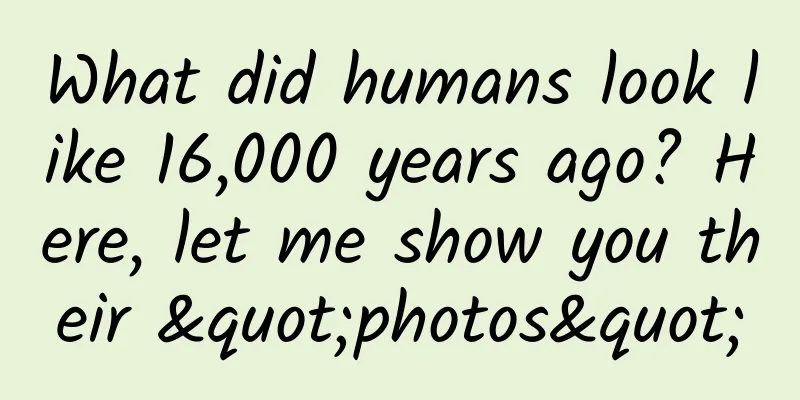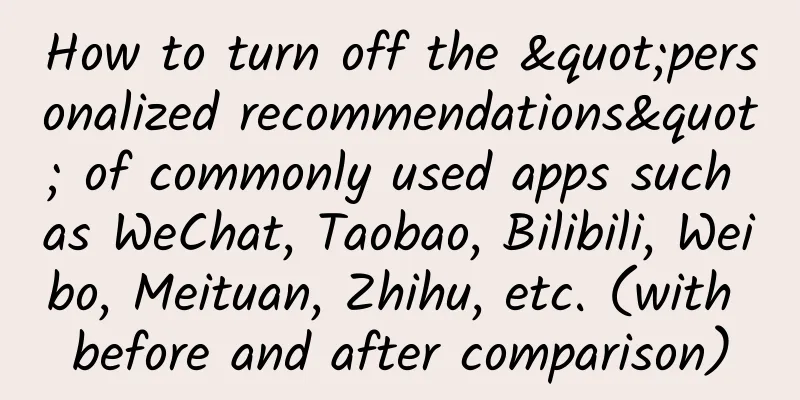Celebrity X-Files: Alan Turing | Celebrating Turing's 110th Birthday

|
Alan Turing, a British computer scientist, mathematician, logician, cryptanalyst and theoretical biologist, is known as the father of computer science and artificial intelligence. He was born on June 23, 1912 in London, England, and died on June 7, 1954 after eating an apple soaked in cyanide solution. Throughout his life, Turing always put science above everything else and made important contributions to mathematics, cryptanalysis, logic, philosophy and mathematical biology, as well as computer science, artificial intelligence and cognitive science. In 1950, Turing published a groundbreaking paper, Computing Machinery and Intelligence, in which he asked the question "Can machines think?" and predicted the possibility of creating machines with real intelligence. Turing believed that computers would eventually be able to think indistinguishably from humans, and proposed the Turing test to assess whether a machine has intelligence. Today, this paper is widely regarded as the foundation of artificial intelligence research. At the same time, Turing was also quite accomplished in cryptography. During World War II, Turing designed some technologies to speed up the deciphering of German codes, including improving the Bombe machine developed by Poland before the war, and successfully deciphering the Enigma code system. In addition, Turing was also a world-class long-distance runner. His best marathon time was 2 hours 46 minutes and 03 seconds (manual timing), which was only 11 minutes slower than Delfo Cabrera, the men's marathon champion of the 1948 London Olympics. On the occasion of the 110th anniversary of Turing's birth, Academic Headlines would like to use this article to commemorate this great scientist with a troubled fate. 110 years ago, on June 23, 1912, Turing was born into an ordinary civil servant family. At that time, even Turing's parents might not have thought that their child would make one great contribution to human science decades later. Turing's life was brilliant. The Turing machine model he proposed laid the foundation for the logical working method of modern computers. During World War II, he successfully cracked the German Enigma code system. Just one year after graduating from university, he was elected a fellow of King's College, Cambridge. He was hailed by Nature magazine as "one of the most brilliant scientific minds of all time"... Turing's life was also unfortunate. He was persecuted by the British government of the time because of his homosexuality, and his career was ruined. He died mysteriously after eating an apple soaked in cyanide solution... Turing at the age of 16 Alan Mathison Turing sixteen / Inventor of the Universal Turing Machine / Turing showed extraordinary talent since he was a child and was fascinated by numbers and intellectual games. He became unstoppable. In 1931, Turing entered Cambridge University to study mathematics. After graduating with honors in 1934, Turing was selected as a researcher at King's College, Cambridge University for his contributions to probability theory. In the eyes of mathematicians, the "efficient" way to solve a problem is actually a method that only requires a human mathematical clerk to memorize it. In Turing's time, those rote workers were actually called "human computers" and they completed some of the work that was later completed by electronic computers. The Entscheidungsproblem seeks an efficient method to solve the fundamental mathematical problem of determining which mathematical propositions are provable and which are not provable in a given formal mathematical system. The method for determining this is called a decision method. In 1936, Turing published his seminal paper On Computable Numbers, with an Application to the Decision Problem. (On Computable Numbers, with an Application to the Entscheidungsproblem) Recommended for publication by American mathematical logician Alonzo Church. In the paper, Turing proposed the idea of the famous "Turing machine", which can represent and calculate any proposition in logic using a universal machine, and derive conclusions according to certain rules. The inference result can be simply stated as follows: the function that can be calculated by the Turing machine is a computable function, otherwise it is an uncomputable function. Church was Turing's doctoral supervisor. Although he reached the same conclusion earlier than Turing, Turing's argument was more understandable and intuitive, and the concept of a universal (Turing) machine was more novel. Turing's approach had far-reaching implications for the emerging science of computing. Turing spent most of his time at Princeton University from 1937 to 1938, where he obtained his doctorate under the guidance of Church. Turing's thesis introduced the concept of supercomputing, adding an oracle to the Turing machine, making it possible to study problems that the Turing machine could not solve. / Codebreaker/ After graduating from Princeton University, Turing returned to King's College London and then joined the UK Government Communications Headquarters. Weeks earlier, the Polish government provided Britain and France with details of Poland's cracking of Enigma, the main cipher machine used by the German military to encrypt radio communications. Turing in the 1930s As early as 1932, a cryptanalysis team of Polish mathematicians led by Marian Rejewski successfully deduced the internal connections of Enigma. In 1938, Rejewski's team designed a code-breaking machine called Bomba. The success of Bomba depended on German operating procedures, but in May 1940, Germany changed the original operating procedures and Bomba became ineffective. So, between the fall of 1939 and the spring of 1940, a team led by Turing redesigned a related but very different code-breaking machine and named it the Bombe. During World War II, Bombe provided a large amount of military intelligence to the Allies. By early 1942, cryptanalysts at Bletchley Park (the main site of the British government's code-breaking work) were deciphering 39,000 intercepted messages per month, a number that later rose to 84,000. Enigma Code-breaking machine Bombe In 1942, Turing also proposed the first systematic method to break messages encrypted by the more sophisticated German cipher machine (called the "Tunny" by the British). Turing was also awarded the Order of the British Empire for his outstanding contribution to code-breaking work. / Computer Designer/ In 1945, Turing was recruited to the National Physical Laboratory (NPL) in London with the task of building an electronic computer. His design for the Automatic Computing Engine (ACE) was the first complete specification for an electronic stored-program general-purpose digital computer. If built exactly as Turing planned, the ACE would have had much more memory than other early computers and would have been much faster. However, Turing's colleagues considered the project too difficult and built a much smaller machine, the Pilot Model ACE. As a result, NPL lost the competition to build the world's first working electronic stored-program digital computer, an honour which went to the Manchester University Computer Laboratory. Turing was frustrated by NPL's delays and joined the University of Manchester Computer Laboratory that same year as deputy director of the laboratory, responsible for the software work on the first real computer, Manchester One. Turing's early theoretical concept of a universal Turing machine had a fundamental impact on the Manchester computer project from the beginning. After Turing came to the University of Manchester, his main contribution to the development of computers was to design an input and output system using the technology of Bletchley Park, and to design a corresponding programming system - which was later used in the first commercial electronic digital computer, the Ferranti Mark I. Of course, Turing also wrote the first programming manual. Turing statue at Bletchley Park In 1952, Turing wrote a chess program. But at that time, there was no computer with enough computing power to execute this program. So Turing imitated the computer, taking half an hour to make each move. He played a game with a colleague, and the result was: the program lost. Later, a research team at the Los Alamos National Laboratory in the United States designed the world's first computer program chess - Los Alamos Chess - on ENIAC based on Turing's theory. / Artificial Intelligence Pioneer/ Throughout his life, Turing always put science above everything else and was very interested in new technologies. In the field of artificial intelligence, Turing is the founder of artificial intelligence and modern cognitive science, and an early advocate of the hypothesis that "the human brain can be largely viewed as a digital computer." In Turing's view, the early cerebral cortex is just an "unorganized machine", but it will become more "organized" through acquired training and evolve into a general machine or something similar. Turing hoped that computers could become smarter through training, so he spent a lot of time studying algorithms, complex computer systems, the development of artificial intelligence, and other questions that scientists asked intelligent machines. In 1950, Turing published a landmark paper, Computing Machinery and Intelligence, in which he raised the question "Can machines think?" and predicted the possibility of creating machines with true intelligence. In order to better verify whether computers can speak natural language like humans and the differences between them cannot be detected, Turing proposed the famous Turing test, which states that if a machine can have a conversation with humans without being identified as a machine, the machine is intelligent. Interestingly, Turing believed at the time that computers would be able to pass the Turing test around the year 2000. Unfortunately, this prediction did not come true. Turing in 1951 / Unfortunate / In March 1951, Turing was inducted as a member of the Royal Society of London, a high honor, but his life became very difficult from then on. In 1952, Turing's homosexual partner and an accomplice broke into Turing's house to steal, but the British police investigation resulted in him being charged with "obvious indecency and sexual perversion" (homosexuality was a crime in the UK at the time). After the public trial, Turing faced two choices: go to jail or accept female hormone injection "therapy" (i.e. chemical castration). Turing chose estrogen injection for a year. The side effects of estrogen injection caused Turing, who originally loved sports, to suffer great physical and mental damage. As a result, Turing could no longer work for the UK Government Communications Headquarters. From 1951 until his death, Turing continued to research artificial life. In 1952, Turing published the book "Chemical Basis of Morphogenesis", which describes his research on the development of morphology and patterns in organisms, and uses computers to simulate the chemical mechanisms of the generation of his hypothesized animal and plant anatomical structures. During this groundbreaking work, Turing died from eating an apple that had been dipped in a cyanide solution. Many people at the time believed that he had eaten the apple intentionally and concluded that he had committed suicide. However, Turing's unexpected death is often associated with the hormone "treatment" he received after being accused of homosexuality, although he died more than a year after stopping hormone injections. But from the autopsy report, there is no evidence that Turing intended to commit suicide, nor is there any evidence that Turing had mental problems. Regardless, the world has lost a man who could have changed the world. / / / / / In September 2009, a petition with over 30,000 signatures forced British Prime Minister Gordon Brown to publicly apologize on behalf of the British government for the "utterly unfair" treatment of Turing. Four years later, Queen Elizabeth II of the United Kingdom pardoned Turing. This is Turing, a great but unfortunate life. References: https://www.britannica.com/biography/Alan-Turing https://en.wikipedia.org/wiki/Alan_Turing |
<<: Monkeypox has been imported into Asia! A picture to understand the "true face" of monkeypox
>>: Why is Salmonella the leading culprit in food poisoning?
Recommend
APIStore——Technology innovation thinking from Baidu
Mobile Internet, along with the concept of "...
Soul product operation report
Soul was launched in 2016 and quickly captured th...
How to clean and disinfect your home? Save!
How to disinfect correctly after picking up a pac...
He is known as a "stubborn ranger" and has identified the sources of more than 20 major rivers around the world with his team.
On February 22, Rolex announced the winners of th...
Changzhou SEO training: effective methods to prevent domain names from being widely resolved
Effective ways to prevent domain names from being...
A 33,000 square kilometer radio silence zone with no signal, a paradise where mobile phones are prohibited
Author: Duan Yuechu In the United States, there i...
MIT reveals the Earth's "self-rescue" mechanism, which takes hundreds of thousands of years at a time
Currently, climate change has become an “invisibl...
Download Chen Yuliang's ancient Chinese medicine pulse method from Baidu Cloud
Introduction to Chen Yuliang's ancient Chines...
New MacBook Air storage performance is not as good as the old device
The newly released 2014 MacBook Air has a processo...
All-round upgrade! Beidou has a new update after a thousand days!
At 10:49 on May 17, my country successfully launc...
How to drink water to be healthy? Don't be misled by it. Let's learn from it.
We all know that the most important elements for ...
Aerospace Science | Where does the space travel ticket that costs 1.5 million yuan go?
Shall we go to the distant space together? Imagin...
5 core formulas for private domain traffic operations
User retention is low, private domain operations ...
iOS 9 is officially released. Have you discovered the hidden features?
[[149579]] Apple has officially released iOS 9 to...
Douyin STOM full-link advertising solution
Today, I will also share with you my experience o...
![[Bugly practical sharing] Android APP quick pad implementation](/upload/images/67ebde9e9f695.webp)








